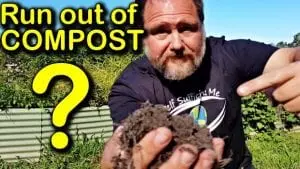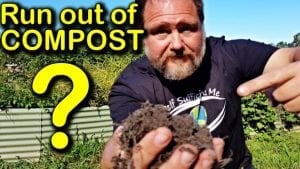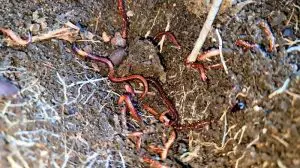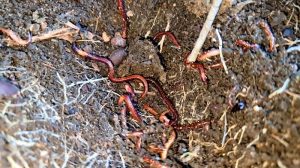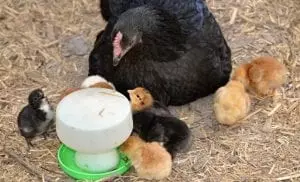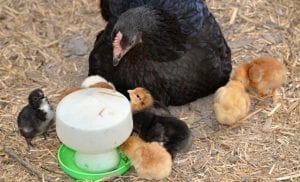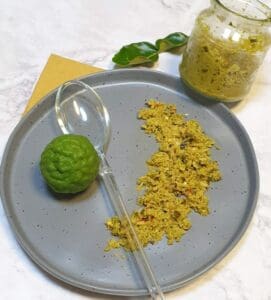Growing a backyard full of food is exciting, satisfying, healthy, and environmentally friendly, but keeping pest damage to a minimum is sometimes a battle. Things can get away from us quickly, especially in the peak growing season: as fast as the crops grow, the damaging insects come in faster. Here are my 10 top organic ways to control pests in the garden.
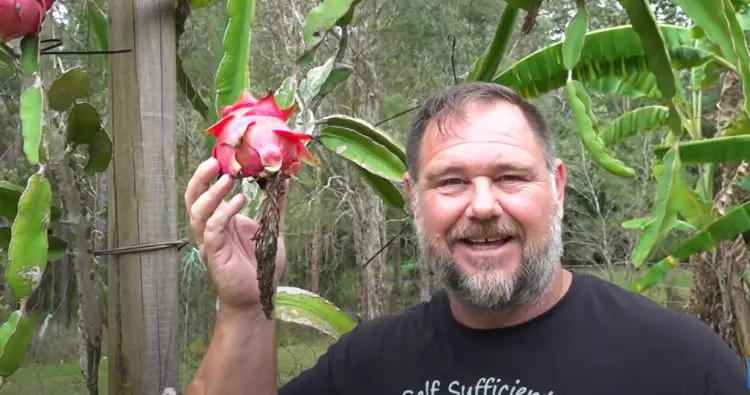
We work so hard to grow our own food- the last thing we want is a bunch of hungry freeloaders landing on our patch and eating or destroying our precious produce. It might surprise you that my 10 organic ways to control pests in the garden aren’t all about sprays. I take a holistic approach that harnesses the power of beneficial animals and insects, growing strategies, crop protection and overall garden management.
Keep It Healthy
Pests like to target sick or dying plants, because that’s what they’re naturally programmed to do. This is natures way of cleaning up and recycling old plants. Plants will get ‘hit’ less often & be healthier if you grow them in good soil, water them correctly, & apply the appropriate amount of fertiliser & trace elements.

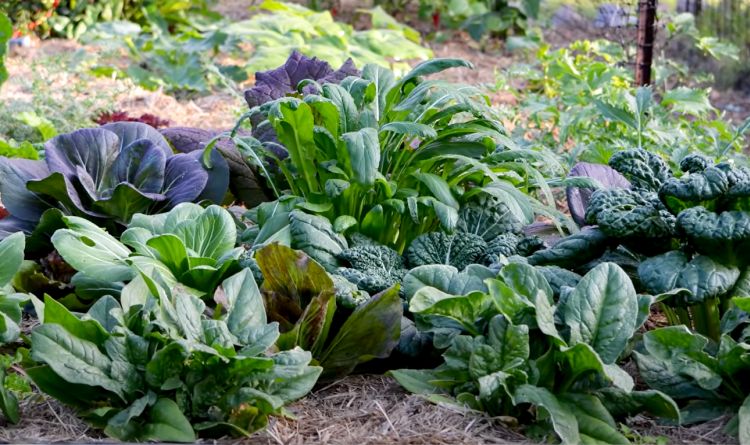
This is not to say that healthy plants won’t get attacked; they will. But keeping your plants as healthy as possible lessens the likelihood, and is part of my multi-facetted management strategy.
Timing
Growing your food crops at the right time of year is important when it comes to pest control. The ‘right time’ is when the temperature and general climate suit them best. Many vegetable seeds will germinate easily- even at the wrong time of year. It’s super-tempting to let them grow, because they will look good when they’re small. But it’s better to pull them out because ultimately they’ll grow poorly and won’t be as productive as they should.

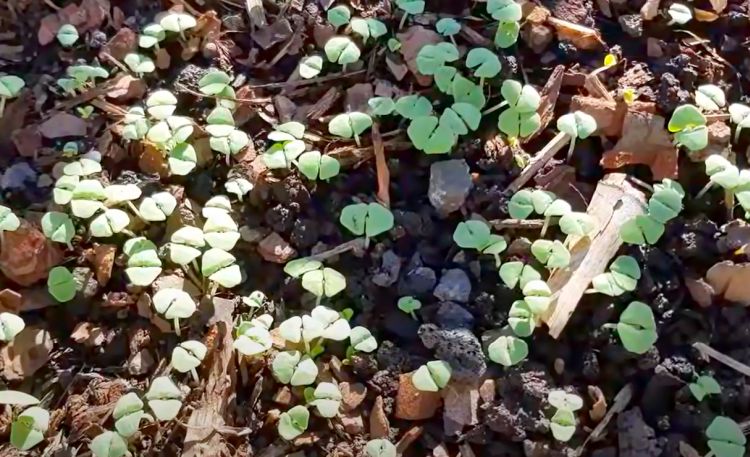
Plants that are gown out of season or out of their ideal temperature range won’t do as well and will often be targeted by pests. On top of that, certain pests are more active at particular times of the year. For example, here in the subtropics, we can grow tomatoes all year round. Yet in spring, the larger varieties get stung badly by the QLD and Mediterranean fruit flies, as that is the season when those pests are active. To get around this pest problem we grow cherry tomatoes, which are not targeted because they are too acidic for the fly larvae to survive. We grow large varieties like black krim and grosse lisse only in winter, when the fruit flies aren’t active.
Harvest Early
Most animals favour ripe fruits. This means that some green or immature produce won’t be targeted, so can be picked early & allowed to ripen indoors before the pests get to it. Tomatoes, capsicum, and chillies are good examples. Some veggies can be eaten green.

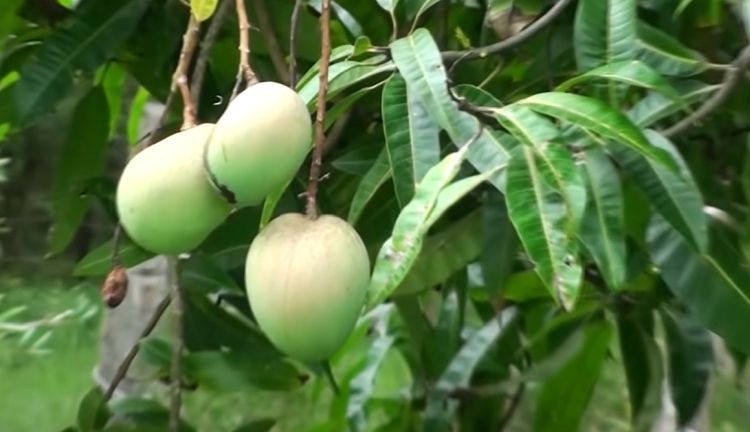
Eating immature fruits is common in some south-east Asian countries for this very reason. Think of green mango, green papaya salad, or cooked green bananas. Unripe fruit is generally safe to eat, and may even have curative properties. Some unripe fruit has been proven to contain higher amounts of the enzyme papain, which alleviates symptoms from various gastric disorders.
Grow More
Using the law of averages, if you grow more than you need, then you won’t mind if some of your produce gets eaten by pests. We often employ this logic in our garden. Trees like mulberry & citrus tend to produce more than enough for us and the animals that visit. I just finished growing a ton of sweet potato, & I noticed while harvesting that mice had nibbled on a few tubers. I had to throw those away, but it didn’t matter as we’d grown more than we needed.

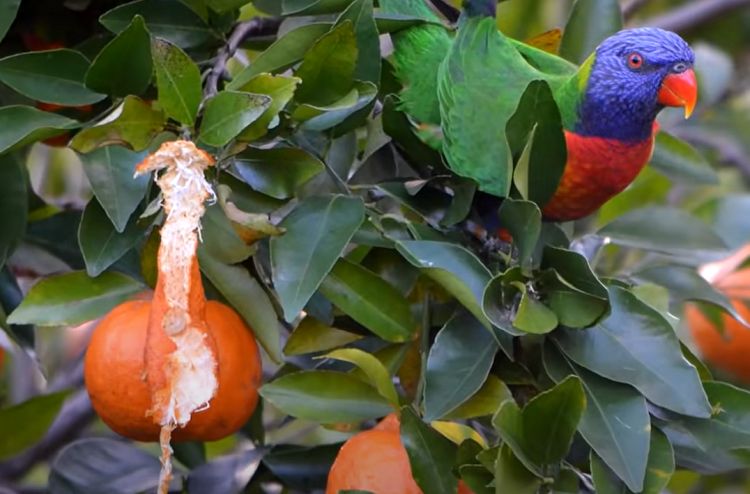
Some gardeners grow a sacrificial plant- meaning they grow more than they need, and allow one plant to become infested by pests. More pests are then attracted to the infested plant and thus away from the healthier specimens.
Manual Removal
Removing pests by hand can make a big difference in slowing down their population growth. I usually do this while I’m watering, which is another great reason to water by hand. Taking the time to slow down really gives you time to be observant and develop good attention to detail in your garden.
For every single bug or caterpillar you remove, several more have been eaten by good animals like predator bugs and birds. In this way, you can work as a team with nature instead of against it.

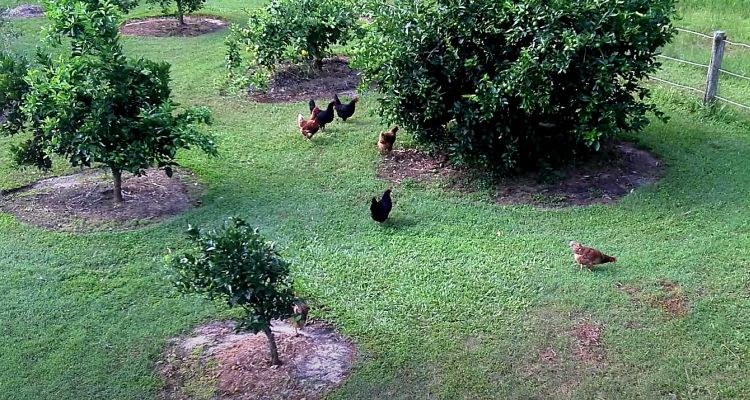
Poultry
Chickens and ducks are excellent at helping control pests in the garden. Both birds only require a small amount of space, and can really make a difference to the pest pressure in your garden. Chickens are a good ‘clean-up’ bird. Let them wander around fruit trees and dig over soil you want prepared, as they are excellent bug catchers. When hens scratch the ground, they are breaking the life cycles of bad bugs. This is because they dig up & eat pupating pests like fruit fly and beetles that mature under the soil surface. But be careful when and where you let them go- chickens can be destructive in a productive vegetable garden!


Ducks, too, have an excellent eye for bugs. I’ve recently discovered that they like eating slugs, snails, and stink bugs, and particularly seek out the nymphs, or babies. Ducks don’t dig as much as chickens so are generally less destructive. In Vietnam I saw how farmers work with nature by putting ducks in the rice fields to keep pests down without ruining the crop.
Habitat
Insects are naturally attracted to a glut of produce, so it’s no wonder that farmers need to use pesticides when they grow a big crop of a single plant. Organic farmers are discovering that diversity of habitat is a real strength when growing food. By growing a variety of produce and plants rather than one big mass of the same crop, they have far less pest trouble. Us backyard growers have an even bigger advantage, because we don’t have the commercial pressure to produce a whole lot of the same product.
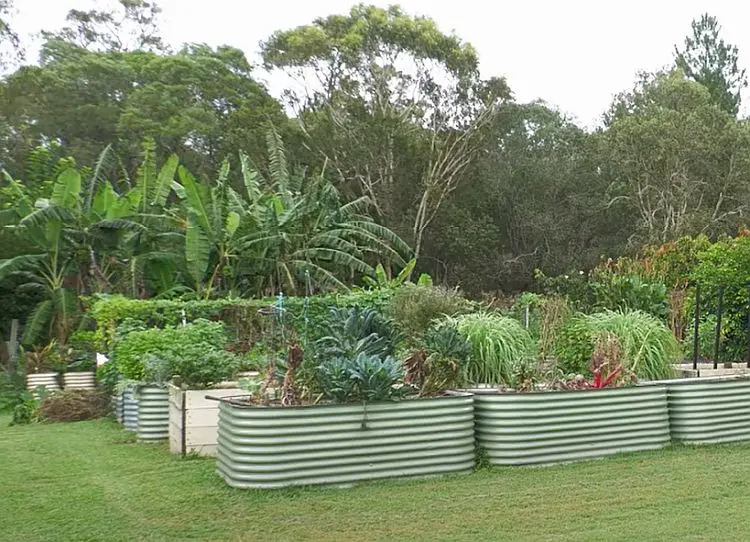
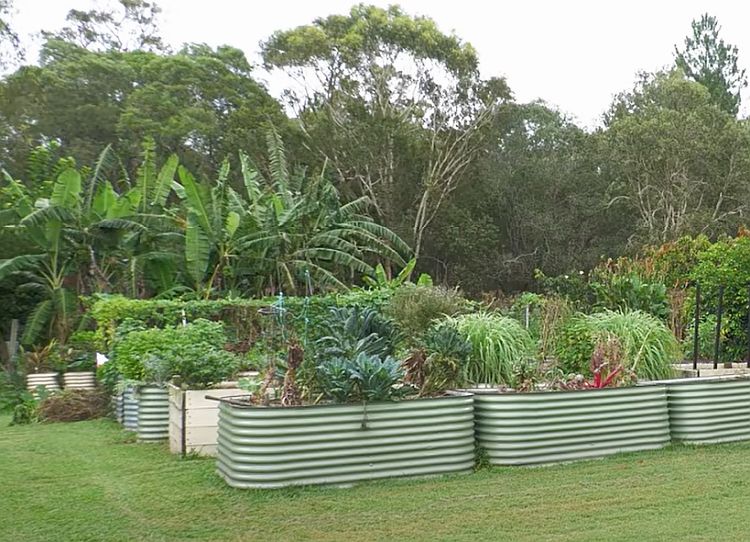
We can grow lots of different plants at the same time, mix them together and incorporate them into the landscape. In this way, we are creating a more natural environment with a balanced ecosystem, because we are providing habitat for native flora, native fauna, predator bugs and beneficial insects.
Companion planting is another great way to naturally repel pests. Marigolds and tomatoes or land cress and broccoli are well-known examples. While this is not something I adhere to personally, I find that scattering herb plants throughout the vegetable garden helps keep the pests away.
Organic Sprays
There are times when pests descend on your garden in such numbers that manual removal just isn’t viable. We rarely have this happen, but when we do we use an organic spray that won’t harm ourselves or other animals.
You can easily make a ‘white oil’ pest spray at home by mixing 2 cups of cooking oil with 1 cup of dishwashing liquid. Use one tablespoon of this mixture in a spray bottle with a litre (one quart) of water. Spray this thoroughly over plants suffering from scale, aphids and leaf miner. White oil smothers rather than poisons insects, and won’t affect your produce. Remember that it does wash off, so will need to be reapplied after rain.

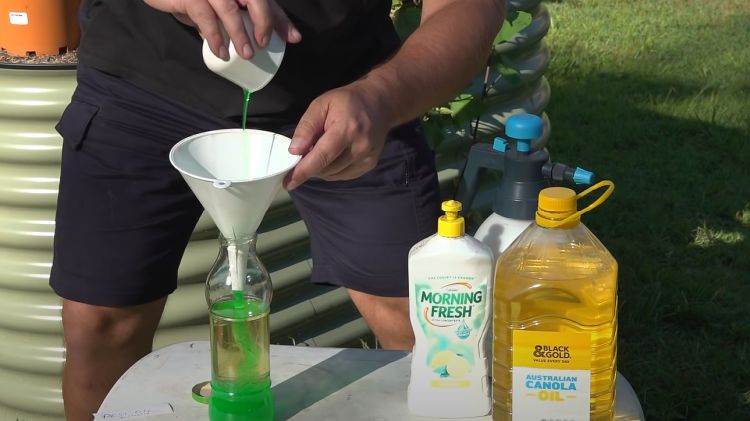
If you see a line of ants running up your fruit trees, head to the medicine cupboard…yes really! Vaseline is the product you’ll need. A ring of vaseline applied around the base of a tree trunk will help with your pest problems. It works by stopping ants from climbing up the tree to protect aphids from their natural predators. If left unchecked, the ants effectively farm the aphids and scale, and in return the ants are fed a sweet honey secretion. If you can stop the ants, the pests will fall prey to their natural predators.
You can choose to buy products like pest oil and other organically-certified sprays like pyrethrum (which is made from daisies). But be aware that pyrethrum also kills good bugs like bees, so if you must use it, do so sparingly & as a last resort. These types of sprays should be used at a time when plants aren’t flowering or when pollinating insects aren’t about.

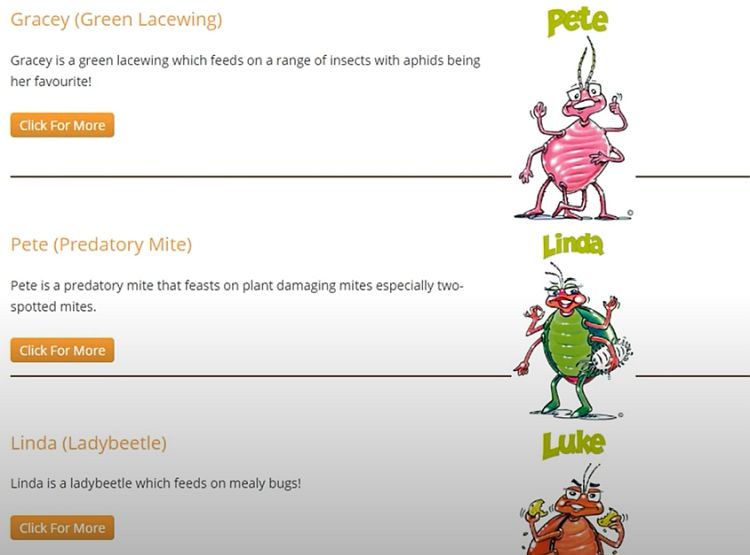
Bio Bugs
Buying good bugs and setting them free in the home garden is becoming a viable option for everyday gardeners. You can buy bugs online quickly and easily. These include predatory mites (that eat bad mites), ladybirds (that eat aphids), and mini wasps (that eat caterpillars). A few small releases of good bugs might just give your habitat the boost it needs to restore natures balance.
Exclusion
Using nets or bags is one of the best ways to keep pests away from our produce. On the downside, it can be expensive, time consuming and impractical in the home garden. Nevertheless, netting whole trees or garden beds is effective against birds and most small animals. Insect netting is the only sure-fire way I’ve found to prevent the QLD fruit fly from ruining our stone fruits and apples.

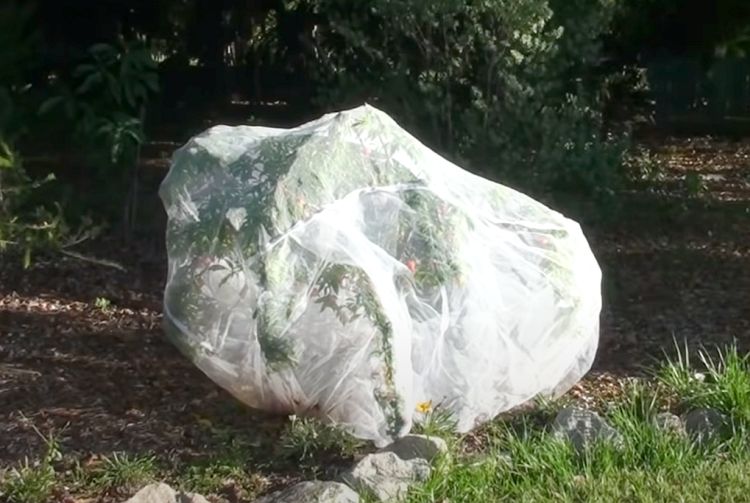
Making a net cover for a garden bed with stakes, irrigation hose and netting is easy. Bagging fruit individually is also a good way to protect it. I’ve had the best results with fibreglass mesh, although polyester, fabric and paper bags can also be used.
There are many different ways I have tried to control pests in the garden. Some of them weren’t successful. Things like scarecrows, an automatic water sprayer, and a mobile of shiny discs didn’t really work for me. Naturally, methods will need to be tweaked according to the climate and topography, but for the subtropics, I have found the above to be the top 10 organic ways to control pests in the garden.

